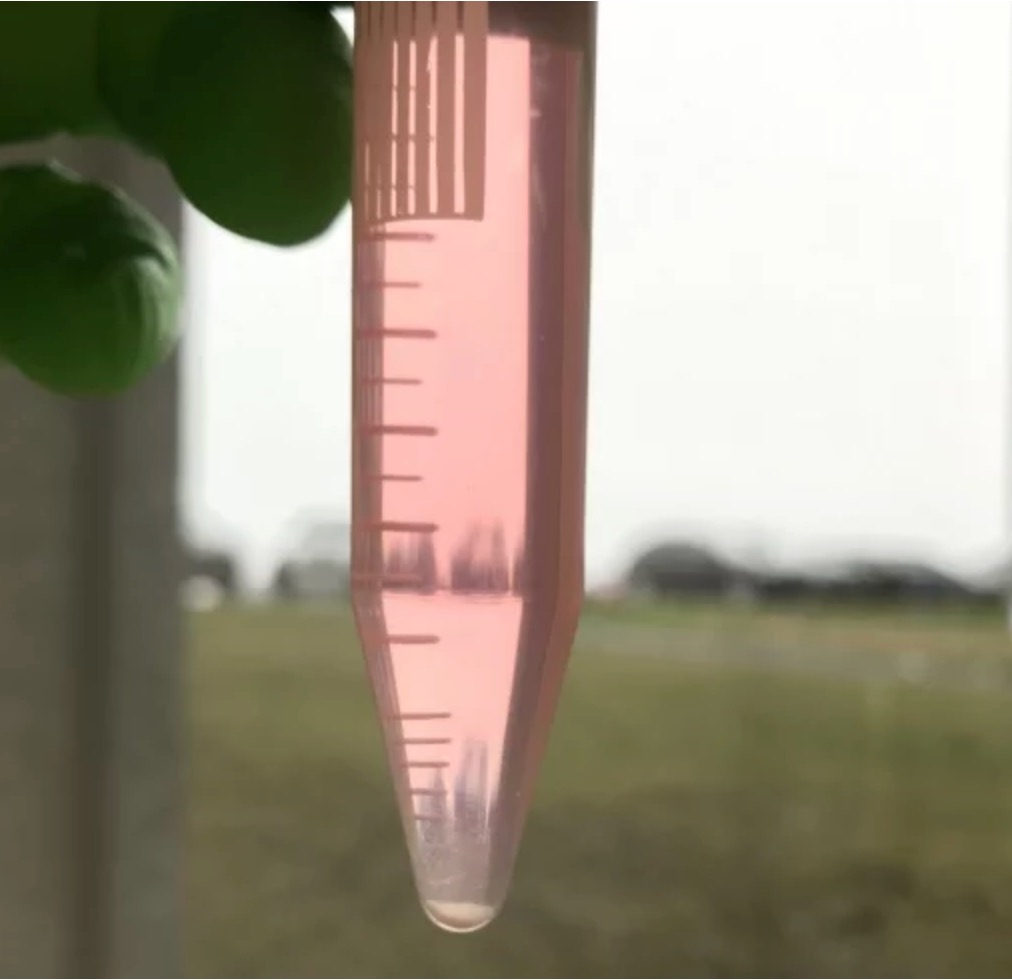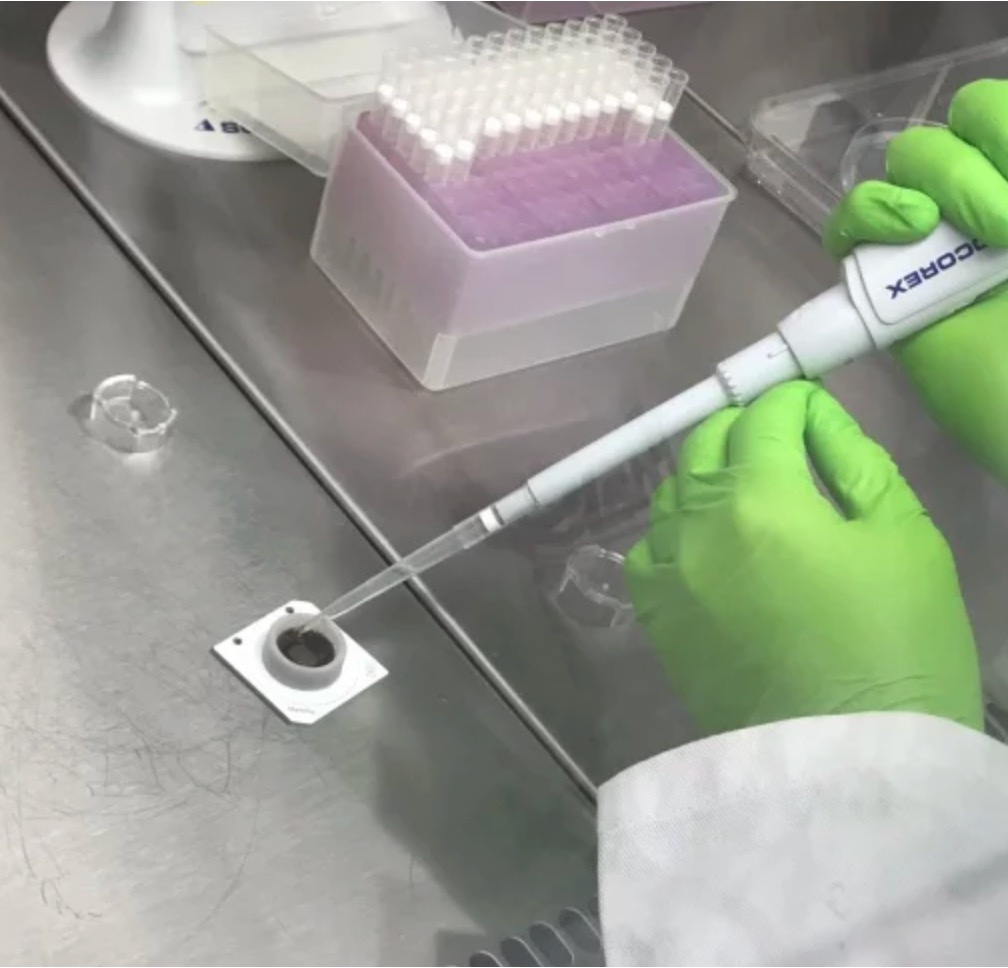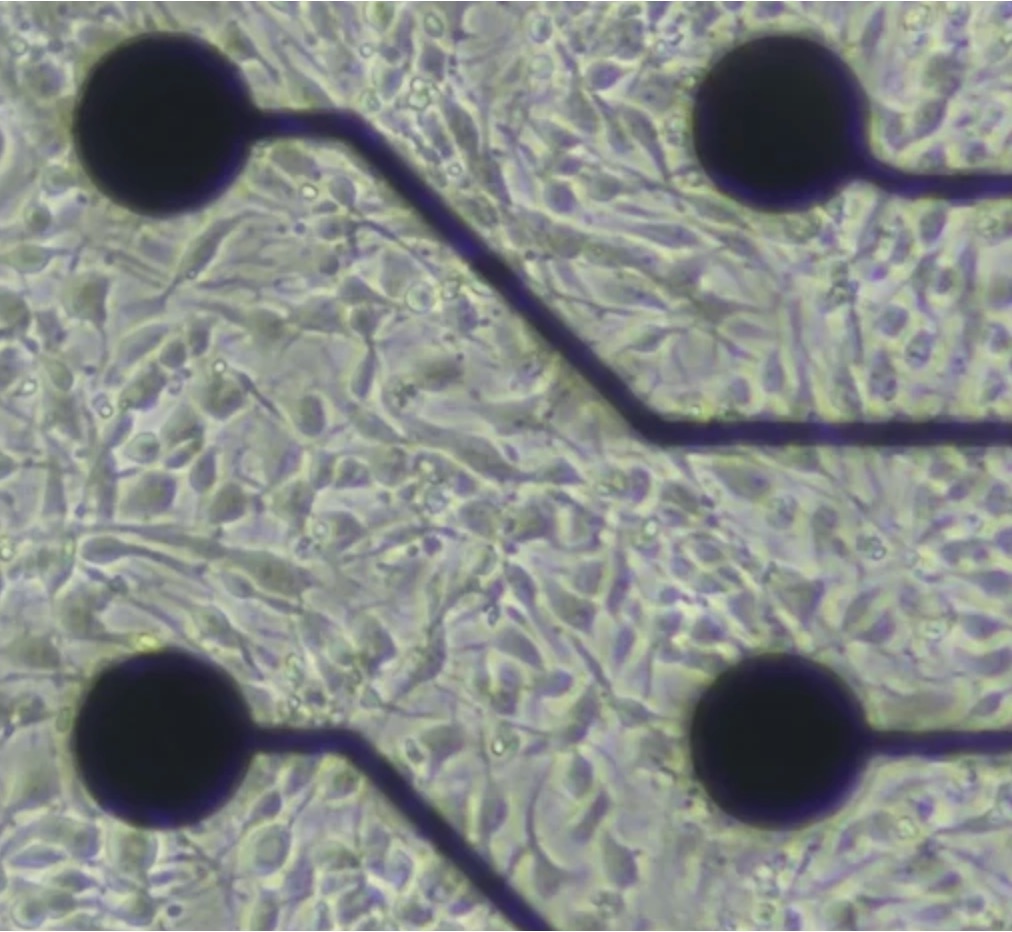We started to work on our biological neural networks. For this application, living neural cells are needed. There are 2 ways to achieve this:
- Buy neural cells and start interacting with them
- Buy neural progenitors and start multiplying them, then only start the interaction
We chose the second option as this gave us the possibility to scale freely the number of neurons and number of experiments. We used fetal neuron stem cells from rat as well as human neurons iPSC. We applied the protocols provided by the cells suppliers (ThermoFicher, RndSystems, Axol) for thawing, culturing, passaging, freezing, and MEA coating.

We quickly noticed that a critical factor for growing cells is the so-called confluence level, which is basically equivalent to the surface fraction that the cells cover. This parameter is critical, below 30% cells will progressively die over the following 10 days, above 95% they may start to differentiate into neurons, which is not desirable at this stage. For measuring this confluence reliably, we actually trained an artificial neural network (U-Net type) in order to automatically label neurons. Our software can then use this label image in order to automatically compute the confluence value. We used this method to monitor systematically the confluence for each medium change.

After several months of work, we were able to successfully obtain more than 10 million stem cells.

Most cells were frozen for later use and a fraction of them were put over 8 Multi Electrode Arrays from different suppliers.

We then stopped including Epidermal Growth Factor and Fibroblast Growth Factor in order to start the differentiation into neurons, astrocytes and oligodendrocytes.

We are now starting the measurements in order to assess the electrical activity or our cells. If those experiments are successful, we will then start using electrical excitations and assess how the network reacts. This will involve C#/C++ programming using the API provided by the MEA suppliers. At this stage, it will be possible to start implementing digital machine learning algorithms in order to achieve the training of our biological networks.
